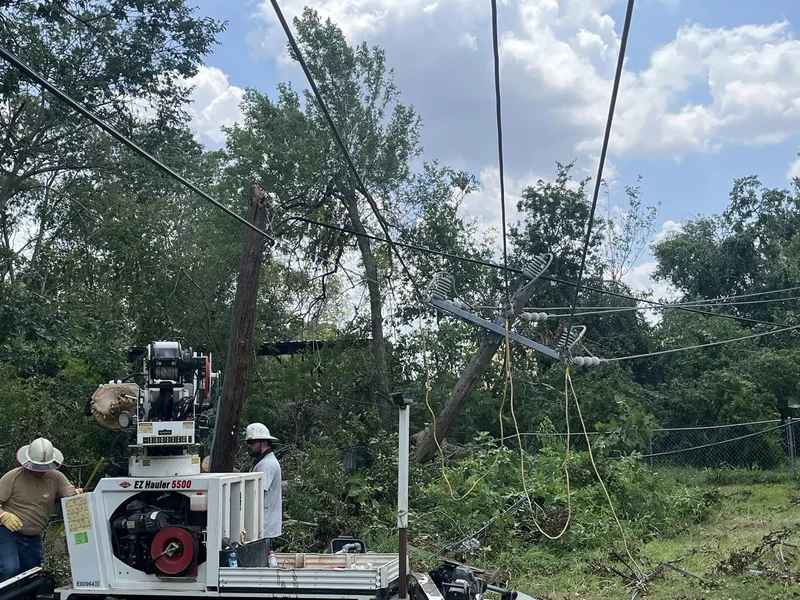I saw a piece from Alabama Power this week, perfectly timed for Halloween, about the "spooky myths" of energy savings. It’s the kind of advice we’ve all heard before: beware of "energy vampires," don't turn your heat all the way off, and maybe grill outside to save a few bucks. It’s well-meaning, charmingly presented, and completely, utterly misses the terrifyingly large monster in the room.
We are being told to hunt for ghosts in our wall sockets, to obsess over the phantom power drawn by a coffee maker. In simpler terms, this is the tiny trickle of electricity that appliances use even when they're turned "off," just by being plugged in. And yes, it adds up. But focusing on it is like meticulously checking for drips in your faucet while ignoring the fact that the city's main water pipe is a hundred years old and about to burst.
The conversation we’re having about energy is stuck in the past. It’s a conversation about individual austerity, about small personal sacrifices. Unplug this, turn down that. It places the burden of a systemic, infrastructural crisis squarely on the shoulders of the consumer. It’s a clever, perhaps unintentional, misdirection. But what if the real problem isn't the "vampire" in your toaster, but the ancient, groaning, and painfully slow-moving behemoth that is our physical energy infrastructure? What if the scariest thing this Halloween isn't a phantom, but a fact?
On the very same day Alabama Power was issuing tips about spooky myths, they also announced Lane closures on Valleydale Road between now and Nov. 28 for utility relocation. Why? To begin the process of relocating power lines for a road-widening project. And here, buried in a local traffic report, is the true horror story. This project—widening just 3.5 miles of road—has been in the works for 27 years. Twenty. Seven. Years. Just to get to the point of planning, approvals, and acquiring the right of way.
The actual utility relocation is expected to take up to three years. The construction itself won't even start until late 2028.
When I first read that, I honestly just sat back in my chair, speechless. We live in a world where we can develop and deploy a world-changing AI model in a matter of months, where a message can circle the globe in less than a second, where we can sequence a genome over a weekend. Yet, the physical grid that powers every single one of those miracles is being upgraded at a pace that can only be described as geological. This is the kind of breakthrough that reminds me why I got into this field in the first place—to solve these massive, frustrating, and deeply human problems of scale and speed.

This isn't just about a single road in Alabama. This is a perfect microcosm of the challenge facing our entire civilization. We have a 21st-century digital world running on a 20th-century physical chassis. It’s a high-performance engine strapped to a wooden cart. We can create brilliant apps that monitor our power usage in real-time, but the grid they’re monitoring is so brittle and outdated that moving a few poles takes the better part of a decade. Are we really supposed to believe that the key to a sustainable future is remembering to unplug our phone charger, and not, say, radically accelerating our ability to build a smarter, more resilient grid?
This is the fundamental disconnect of our time. We're applying digital-age thinking to an industrial-age problem. It’s like the dawn of the automobile, where the first drivers were still thinking in terms of horse trails. The real revolution wasn't just the car; it was the creation of an entirely new system to support it—paved highways, gas stations, traffic laws. We are in that exact moment with our energy infrastructure, but we’re still arguing about the best type of horseshoe.
So, what does this mean for us? It means we need to shift our focus. Dramatically. The conversation about "energy vampires" is a distraction. It's a comforting but ultimately insignificant detail in a much larger, more complex, and frankly, more inspiring story. The real work isn't about scaring ourselves into unplugging a lamp; it’s about having a serious, national-level commitment to overhauling the physical foundation of our society.
This isn't a problem you or I can solve by buying a power strip. This requires bold policy, massive investment, and a streamlined regulatory environment that doesn't let a 3.5-mile project languish for nearly three decades. It requires us to think like engineers and futurists, not just consumers. We need to be demanding smarter grids, distributed power generation, and high-voltage direct current lines that can move renewable energy across the continent with staggering efficiency. The speed of this is just staggering—it means the gap between today’s analog grid and tomorrow’s smart grid is closing faster than we can even comprehend, but only if we have the will to build it.
Let's stop hunting for tiny ghosts in the wiring. The real monster is the inertia of the system itself. It’s big, it’s slow, and it’s expensive to fight. But unlike the phantoms in our outlets, this monster is real. And the incredible thing is, we have the technology and the ingenuity to defeat it. The only question is whether we have the collective vision and the political will to finally face it.
Let's be clear. The challenge of our generation isn't about micromanaging our personal carbon footprints into oblivion. That’s a narrative that serves the status quo. The real, defining mission is to build a 21st-century infrastructure for a 21st-century world. It's about big, ambitious, audacious projects. It's about rewriting the physical code of our civilization. Stop worrying about your toaster. Start demanding a grid that’s as smart, fast, and resilient as the future we all know is possible.